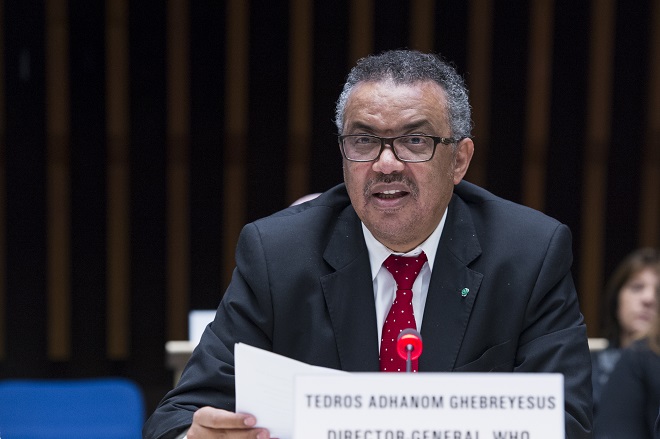This open letter to cities was first published on the World Health Organization’s website.

Dear mayors of the world,
Former US President Lyndon B Johnson once said, “When the burdens of the presidency seem unusually heavy, I always remind myself it could be worse. I could be a mayor.”
Johnson’s quote describes perfectly the enormous responsibility mayors have, but also the opportunity you have to change the lives of billions of people living in your cities.
Now, those lives are under threat by an invisible but beatable enemy that is right under your noses: air pollution.
Nine out of 10 people in the world breathe polluted air, and air pollution in many places is still getting worse.
This year, World Cities Day coincides with the first World Health Organization Global Conference on Air Pollution and Health.
More than 800 attendees from national, regional and city governments, the scientific community, civil society, the private sector and international organizations are here in Geneva to share and comb through the latest science, solutions and possibilities to tackle this tremendous health crisis.
We have overwhelming evidence that exposure to air pollution kills 7 million people each year, including 600 000 children.
It costs economies hundreds of billions of dollars in lost human health and potential: it is a significant cause of stroke, heart disease and cancer, and is linked to low birth weight, premature births and diabetes, while a growing body of research shows links to dementia, Alzheimer’s disease and cognitive impairment. It also reduces food security by decreasing the yield of several staple crops.
The good news is, there are solutions that could save these lives and claw back these losses, while contributing greatly to climate stability and the achievement of the Sustainable Development Goals.
All over the world, cities are taking action on transport, urban planning, clean and efficient supply and use of energy, indoor air pollution, waste management and agriculture.
A growing number of your cities have shared commitments to action and success stories as part of the BreatheLife network. For example:
Seoul has redesigned parts of its centre to reclaim it for people as well as improve air quality, while being brave about trying out new ideas from free public transport on high pollution days to monitoring and enforcement by drone.
Mexico City has found great success with its ProAire system, which is now being implemented in other cities in the country, including several BreatheLife ones.
Vancouver is designing its city to prioritize pedestrians and cyclists, and striving for zero emissions in transport and energy.
Accra has embarked on implementing a comprehensive air quality management plan and has outlined strategies to improve household and ambient air pollution.
And Oslo has achieved a 35% reduction in carbon dioxide emissions by offering benefits to owners of electric vehicles like tax breaks, free travel on toll roads and public ferries, access to bus and taxi lanes, and free municipal parking. On the other hand, non-electric cars incur high tolls. As a result, Oslo has the highest number of electric vehicles per capita in the world.
We have so many stories like these, and more keep coming. They give me cause for optimism.
Already, the majority of the world’s population lives in urban areas, and that number is growing, which means that whatever decisions you make, actions you take and people you lead to a clean air future will have major and far-reaching impacts.
This World Cities Day, I want to take this opportunity to invite all of you to take part in the global fight for clean air through the BreatheLife campaign.
For a healthier, safer, fairer world,
Tedros
Banner photo by Let Ideas Compete/CC BY-NC-ND 2.0